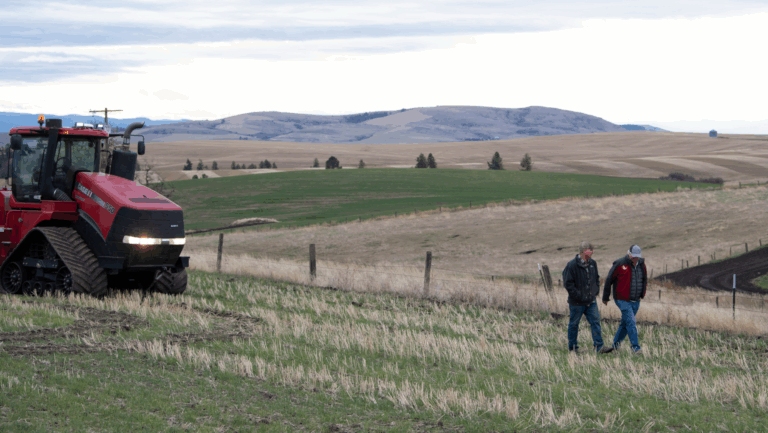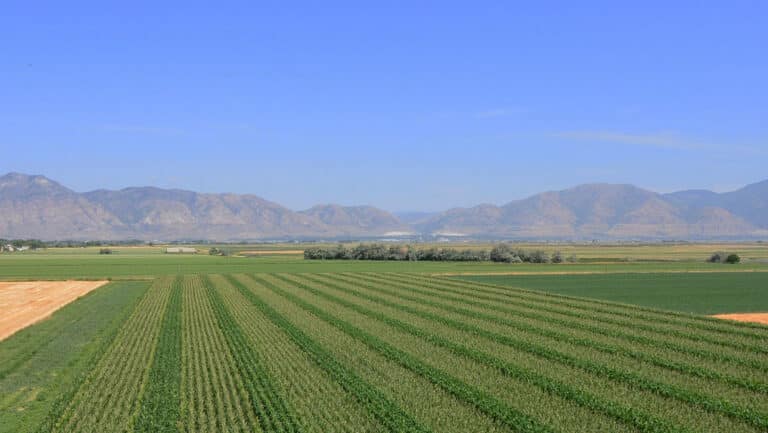When to Integrate Farm Business Loan into Your Farm’s Business Plan
Learn how you can create a profitable farm business plan amid uncontrollable factors.
A solid farm business plan is the key to success in an industry like agriculture that faces inevitable volatility—such as rising input costs, severe weather, and more.
Reassessing your farm finances on a regular basis helps you determine how they can be strategically leveraged to increase revenue and lower risk. Incorporating these regular financial assessments into an updated business plan for your farm helps you identify if a farm business loan is required to keep your operation thriving.
In this article, you will learn the five steps needed to create a strong farm business plan, including:
- Analyzing the market;
- Planning input purchases;
- Identifying farm labor needs;
- Monitoring past performance; and
- Evaluating if a farm business loan is required.
Create a Profitable Farm Business Plan in Five Easy Steps
The purpose of a farm business plan is to create an effective strategy that sets your operation up for long-term success. You should include the following components when development a strong farm business plan:
- Mission statement;
- History of operation;
- Location/commodities;
- Acreage;
- Operational strengths and challenges;
- Production methods;
- Marketing strategy;
- Expenses;
- Management strategy; and
- Operational goals.
When building out your farm business plan, consider the following steps to keep you on track.
1. Analyze the Market
It’s always a good idea to conduct market research before deciding what to grow next season. During times of fluctuating commodity prices, it can be challenging to predict which commodity would be the most profitable. Looking at recent and historical trends can help you make more informed farm business planning decisions.
Use the following questions as a starting point to determine which crops would be the most profitable for your farm business:
- Is certain equipment required for planting or harvesting this particular crop?
- How much of the crop will you need to grow to make a profit?
- What price are other farmers selling the same crop for?
This phase of planning is also ideal for seeking out new avenues for revenue. Are there places you can sell that you haven’t sold before? For example, selling directly to your community at a farmers market could help eliminate the middleman and generate higher net profit margins.
Is there a product you can make with what you grow that would increase your profits with just a little more effort? Utilizing feedback from your suppliers, fellow farmers, and customers can help spark new (and profitable) ideas.
2. Strategize Input Costs
Especially in a climate of rising production costs, it’s important to purchase strategically. Some ways to lower costs include purchasing inputs ahead of time and shopping around for the cheapest price. Consider generic alternatives to chemical inputs and ways that you can repair farm equipment instead of replacing it.
3. Identify Farm Labor Needs
Farm labor costs and labor shortages continue to challenge farmers across the nation. In 2022, farm labor costs are expected to comprise 9.7 percent of total farm input costs.
Many farmers utilize the H-2A program for foreign agricultural workers, so determining whether to use this program is important. Laying out a strategy to both recruit and retain farmworkers will help you implement a farm business plan that ensures you have the labor you need to complete essential jobs on your operation.
4. Monitor Past Performance
Once you’ve identified the opportunities for growth, examining your farm business performance in different areas can help you pinpoint a plan of action as you move forward.
Here are examples of key performance indicators (KPIs) that measure farm business health:
- Operating profit margin;
- Asset turnover ratio;
- Return on assets;
- Return on equity; and
- Sustainable growth rate.
AgAmerica’s Financial Health Check tool is another way to see where improvements could be made.
Understanding your operational strengths and weaknesses will help you mold a farm business plan that takes both into account.
5. Evaluate if a Farm Business Loan is Required
With interest rates expected to increase further, it may be prudent to lock in your farm loan rates now. In 2022, interest rates comprised an estimated six percent of total production expenses. To curb inflation, the Federal Reserve moved towards tighter monetary policy in 2022 with a total rise of 4.5 percent—the highest interest rate hike seen in a single year since the 1980s.
Before taking out a farm business loan, you will need to determine whether a fixed or variable interest rate farm loan is better for your operation. Both have pros and cons depending on market shifts. AgAmerica offers both fixed- and variable-rate farm loan options with terms up to 30 years.
Amid rising production expenses, securing working capital can help you increase your financial liquidity so you can continue implementing your farm business plan and building a resilient operation. If you have existing financing, consider refinancing your farm business loan to reduce your payments and/or interest rate.
Increase Working Capital with a Farm Business Loan from AgAmerica
After determining your operational strengths, weaknesses, and goals, it’s wise to identify what kind of financing could help you level up your operation and sustain its growth during times of volatility. With a spectrum of conventional and alternative farm loan products, AgAmerica is here to provide both financial support and counsel as your farm business plan evolves.
Learn more about how you can strengthen your farm operation with a farm business loan from AgAmerica.






